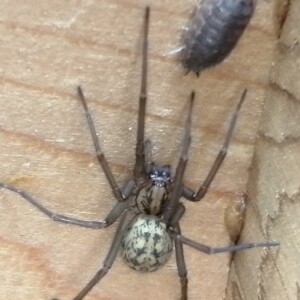Just Teasing
When the bees decide that an egg will become a new queen bee, it takes 3 days for the egg to hatch into a larva, 5 more days of feeding in the cell for the larva to become mature enough to stop feeding and seal the cell (on day 8), then 8 more days for further growth and metamorphosis of the larva into an adult queen - 16 days in total until the cell is unsealed and the queen emerges
This is swarm season (I may have mentioned that before!) If the bees start rearing queens, it means they are ready to swarm, and they will usually do so the same day that the cell of the first new queen is sealed. The job of the beekeeper is to spot this process happening and take action to prevent a swarm leaving, with the loss of bees (and queen!) which that entails
Luckily for the beekeeper, 'queen cells' look very different to the cells in which workers or drones are reared, or those in which honey or pollen are stored. Most of us visit a hive on roughly 7 day cycles during May and June, looking for in-progress queen cells, which look like... this!
The wood at the bottom is the bottom bar of a frame - the bees have not extended the comb all the way down to it, leaving a gap - this is not unusual. The sealed cells at the top of the shot are worker brood cells - the unsealed cells are ones recently vacated by new workers. The wax structure in the gap is the first stage of a queen cell. At the bottom you can see the slightly ragged edge of a downward-facing hole - unlike the outward-facing aspect of all the other cells. The unique feature of queen cells, that makes them so easy to identify, is that they hang down the comb, at 90 degrees to all other types (though by no means all are at the bottom, like this one) If it is completed, it will extend at least as far as that bottom bar, in a narrow, pear-drop of reinforced wax; queens are bigger than other bees, their cells need to be longer
But here's the catch: this is not (yet) a queen cell. There is nothing in it - no egg, no larva, no food. The bees are not in 'swarm mode' and may not ever decide that they are. Nevertheless, they build these 'practice run' structures and fuss over them, maintaining and polishing as if they were a vital part of the colony. They are like teenagers, playing at being adults without actually taking the plunge. If I break it down - which I often do, to be absolutely sure it is empty - they will rebuild it. If they ever decide they are really swarming, they will extend it and induce the queen to lay in it - or move an egg from a worker cell
It is called a 'play cell' (or a 'queen cup'). It means they are a healthy, vibrant colony, for which reproduction (swarming) is an option, but they haven't decided yet. Anyway, if they have to put up with regular visits from a beekeeper, why not give the interfering oaf something to do?
The extra is a squatter in the space between the double walls of the same hive - helpfully posing next to a woodlouse for scale (without any evil intent, I think). I think it is a species of 'giant house spider', though I'm not sure I've ever seen one in the house. She sat motionless on the inner side of the outer wall while we completed the inspection and remained there as I replaced it. Perhaps we will become friends over the course of the summer; she may even tip me a wink if she has heard about the bees swarming for real


Comments
Sign in or get an account to comment.


